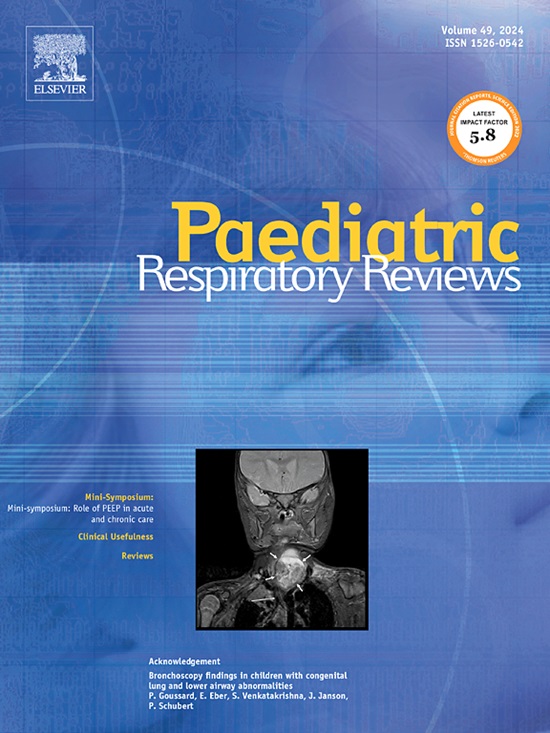Post viral bronchiolitis obliterans in children: A rare and potentially devastating disease
IF 4
3区 医学
Q1 PEDIATRICS
引用次数: 0
Abstract
Post infectious bronchiolitis obliterans (PIBO) is a rare but severe disease in children. Several respiratory pathogens are incriminated but adenovirus is still the most represented. Risk factors are well described: the male gender, hypoxemia at diagnosis and required mechanical ventilation. No risk factor is linked to the newborn period. The clinical spectrum of PIBO is broad, ranging from asymptomatic patients with fixed airflow obstruction to severe respiratory insufficiency requiring continuous oxygen supplementation. Diagnosis includes a combination of a clinical history, absence of reversible airflow obstructions and ground glass and gas trapping on high resolution computed tomography. PIBO is primarily a neutrophilic pathology of small bronchioles characterized by high levels of pro-inflammatory cytokines leading to tissue remodeling and fibrosis of the small airways. The difficulty is to discriminate between the host’s normal response, an exaggerated inflammatory response and the potential iatrogenic consequences of the initial infection treatment, particularly prolonged mechanical ventilation. Damage to the respiratory epithelium with a possible link to viral infections are considered as potential mechanisms of PIBO. No specific management exists. Much remains to be done in this field to clarify the underlying mechanisms, identify biomarkers, and develop clear monitoring pathways and treatment protocols.
儿童病毒后阻塞性支气管炎:一种罕见的潜在破坏性疾病
摘要传染性后闭塞性细支气管炎是一种罕见但严重的儿童疾病。几种呼吸道病原体都与之有关,但腺病毒仍是最具代表性的。危险因素有很好的描述:男性,诊断时低氧血症和需要机械通气。没有风险因素与新生儿期有关。PIBO的临床范围很广,从无症状的固定气流阻塞患者到需要持续补氧的严重呼吸功能不全患者。诊断包括结合临床病史,无可逆气流阻塞和高分辨率计算机断层扫描的磨砂玻璃和气体捕获。PIBO主要是小细支气管的中性粒细胞病理,其特征是高水平的促炎细胞因子导致小气道的组织重塑和纤维化。困难在于区分宿主的正常反应、夸大的炎症反应和最初感染治疗的潜在医源性后果,特别是长时间机械通气。呼吸道上皮损伤可能与病毒感染有关,被认为是PIBO的潜在机制。没有具体的管理。在这一领域还有很多工作要做,以阐明潜在的机制,识别生物标志物,并制定明确的监测途径和治疗方案。
本文章由计算机程序翻译,如有差异,请以英文原文为准。
求助全文
约1分钟内获得全文
求助全文
来源期刊

Paediatric Respiratory Reviews
医学-呼吸系统
CiteScore
12.50
自引率
0.00%
发文量
40
审稿时长
23 days
期刊介绍:
Paediatric Respiratory Reviews offers authors the opportunity to submit their own editorials, educational reviews and short communications on topics relevant to paediatric respiratory medicine. These peer reviewed contributions will complement the commissioned reviews which will continue to form an integral part of the journal.
Subjects covered include:
• Epidemiology
• Immunology and cell biology
• Physiology
• Occupational disorders
• The role of allergens and pollutants
A particular emphasis is given to the recommendation of "best practice" for primary care physicians and paediatricians.
Paediatric Respiratory Reviews is aimed at general paediatricians but it should also be read by specialist paediatric physicians and nurses, respiratory physicians and general practitioners.
It is a journal for those who are busy and do not have time to read systematically through literature, but who need to stay up to date in the field of paediatric respiratory and sleep medicine.
 求助内容:
求助内容: 应助结果提醒方式:
应助结果提醒方式:


